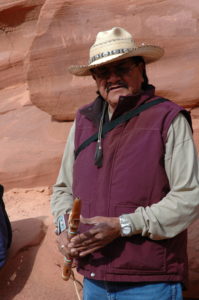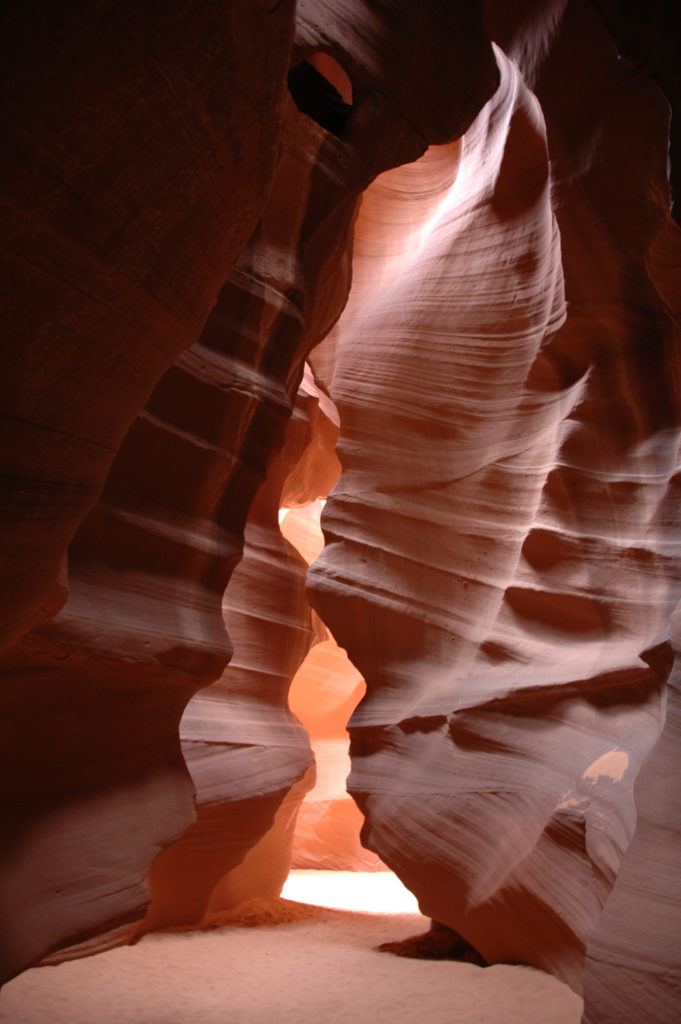 The Grand Canyon gets all the press, but nearby and not to be missed is Antelope Canyon. With COVID-19 keeping most of us from any serious outdoors time, I decided to travel back in time to visit an old flame of sorts. Several years ago I arrived back in the Washington, DC area from my home in Brussels, then hopped a plane out to Las Vegas. After several days of losing money I loaded up a rental car for a road trip that took me to the Grand Canyon. The views were magnificent, both from the rim and the single prop airplane we took over the mighty gash. Then it was on to an inflatable raft and down the Colorado River from the Glen Canyon dam. I’ll have more on that later, as well as the continuing drive out to Bryce Canyon. This piece is about Antelope Canyon, another stop on the grand visit.
The Grand Canyon gets all the press, but nearby and not to be missed is Antelope Canyon. With COVID-19 keeping most of us from any serious outdoors time, I decided to travel back in time to visit an old flame of sorts. Several years ago I arrived back in the Washington, DC area from my home in Brussels, then hopped a plane out to Las Vegas. After several days of losing money I loaded up a rental car for a road trip that took me to the Grand Canyon. The views were magnificent, both from the rim and the single prop airplane we took over the mighty gash. Then it was on to an inflatable raft and down the Colorado River from the Glen Canyon dam. I’ll have more on that later, as well as the continuing drive out to Bryce Canyon. This piece is about Antelope Canyon, another stop on the grand visit.
Antelope Canyon is actually two canyons, unimaginatively named the Upper and Lower Antelope Canyon. Both are on land belonging to the Navajo Nation tucked in between the famed Horseshoe Bend and Lake Powell, the man-made reservoir created by the Glen Canyon dam. Access is limited, and to my surprise, only possible since 1997. To visit, you need to make reservations with a tour group led by a Navajo guide. Our guide made the experience much more than simply walking through the tight slot canyon. He was able to give a sense of both the geological history of canyon formation and the cultural importance of the area to the Navajo people.
Unlike the Grand Canyon’s mighty river, Antelope Canyon is dry. Visitors snake through the narrow winding passages, more like tunnels than most people’s idea of a typical canyon. No water flows through and a soft sand lines the pathway. But it wasn’t always that way. The smooth yet striated canyon walls easily reveal the canyon’s origins. Over hundreds of years, flash flooding during the monsoon season picks up sand and, as it rushes through the tight curves of Navajo sandstone – essentially, petrified sand dunes – abrades the canyon walls into their iconic flowing designs. The dryness of the passages are deceiving; sudden rains can quickly flood the canyon. Even rains that fall far away can be funneled into the canyons with little notice. Which is one of the reasons for the mandatory guided tours.

Our guide carried a recorder-like musical instrument, whose haunting song he played at one point in the tour. He explained that Antelope Canyon is a sacred site to the Navajo, almost like entering a cathedral. We pause and collect a sense of reverence and respect for the place we are about to enter, and the Navajo people who are our hosts. From our guide we can’t help but feel uplifted by the power of nature and the harmony of the experience. To the Navajo, this is a spiritual experience. The effect was heightened by beams of sunlight radiating down from openings in the top of the otherwise seemingly enclosed canyon. I too felt awed.
As I travel the world I find it is these small places, the ones many people never see, that inspire me the most. At Antelope Canyon I was able to experience both the science and natural wonder of the place and the deeper meaning to the Native American populations who struggle to retain their cultural history in an often unforgiving world.
David J. Kent is an avid science traveler and the author of Lincoln: The Man Who Saved America, in Barnes and Noble stores now. His previous books include Tesla: The Wizard of Electricity and Edison: The Inventor of the Modern World and two specialty e-books: Nikola Tesla: Renewable Energy Ahead of Its Time and Abraham Lincoln and Nikola Tesla: Connected by Fate.
Check out my Goodreads author page. While you’re at it, “Like” my Facebook author page for more updates!










